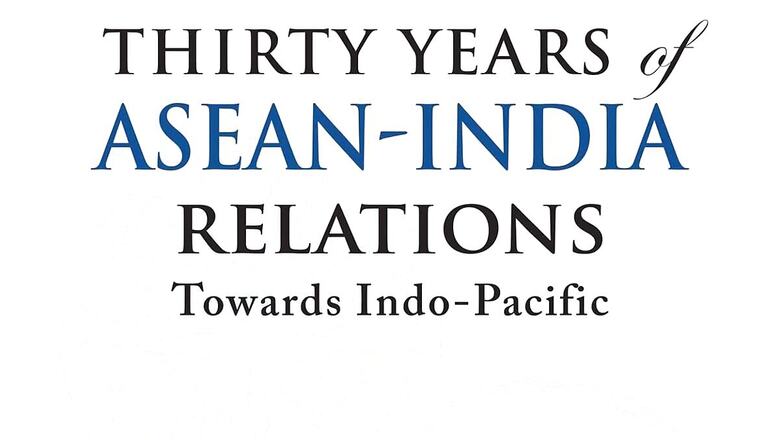
views
The India-ASEAN partnership is now 30 years young. Starting in 1992 as a ‘sectoral dialogue partnership’, as post-liberalisation India entered a ‘Look East policy’, it is the date from which anniversaries are founded. In 1996, India became a dialogue partner and was upgraded to a summit in 2002.
India’s relationship with the Association of Southeast Asian Nations (ASEAN) has traversed the distance from the ‘Look East policy’ to the ‘Act East policy’. In 2018, Prime Minister Narendra Modi’s seminal speech in Singapore enunciated the Indian approach to the Indo-Pacific.
After 30 years, the partnership now has its own stability and interaction. It’s part of the evolving regional approaches, including through the ‘East Asia Summit’ and the ramifications of the Indo-Pacific. From 1992 to 2022, it is a far more confident India with a large economy, a demographic and democratic dividend and progress in the S&T and digital fields that is the fulcrum of the Indo-Pacific.
Therefore, the 30th anniversary celebration of the India-ASEAN partnership had a special significance. To mark this, a splendid edited volume ‘Thirty Years of ASEAN-India Relations: Towards Indo-Pacific’ has been published under the stewardship of Dr Prabir De of the ASEAN-India Centre (AIC).
It is truly a marvellous compendium – traversing the transformation of the relationship from the “look to the act east” policy. The authors of the book bring interesting perspectives to India-ASEAN relations and provide a good flavour to the book. Most of the authors are reputed scholars in the area of international relations and trade policy. Some of them have worked with the Government of India for shaping India-ASEAN relations.
There are six chapters, dealing with cooperation in different aspects of economy, trade and investment sectors. Subsequently, the chapter on India-ASEAN trade in services offers crucial insights regarding changing services trade between India-ASEAN countries. The chapter on investment is well-researched and informative. It highlights some important sectors where cross-border investment has increased after the India-ASEAN FTA.
There are two interesting chapters on the value chain linkages between India and ASEAN. These are important as these are going to grow further. There are two informative chapters relating to connectivity on which much has been discussed, but projects have underperformed.
Cultural ties are discussed in Part 2 of the book. Part 3, comprising over 10 chapters, discusses new areas of cooperation, including digital economy, but does not provide deeper insights. Issues like climate change and post-pandemic cooperation as well as the SDGs are focused on. But there is perhaps an overkill on the E-VBAB with two chapters devoted to it, though little is really happening.
There are some chapters on MSMEs, non-traditional security challenges and the development partnership with sub-regional institutions among ASEAN countries. They make a strong case for fostering strong ties and a better ecosystem for businesses. These issues are not normally dealt with in detail in the India-ASEAN academic narrative.
Part 4 deals with the way forward and has interesting chapters on maritime domain awareness, the Indo-Pacific Oceans Initiative and its cooperation with the ASEAN Outlook on the Indo-Pacific. The emerging global order and ASEAN-India partnership within the Indo-Pacific construct is discussed.
The book is a proponent of ASEAN-India partnership. To that end, it does its part extremely well. It brings out a little bit of history, focuses more on current developments in the last five years. It has useful sectoral chapters and finally suggestions for the future.
Understandably, this is an academic point of view. It provides well-researched papers, which give a perspective of the partnership often couched in happy terms, but whose real gains are not widely known. The success of this book is that it manifests the gainful and productive aspects of India-ASEAN partnership and gives it a contemporary outlook and relevance.
As big power rivalry in the region grows, ASEAN is in the vortex of trying to strategically deal with the US and its friends, while economically engaging China. In the current atmosphere, where US-China and US-Russia relations are cleaved, ASEAN finds that managing its unity and centrality are not easy.
In this context, the India-ASEAN partnership assumes greater significance and responsibility. Instead of letting big power rivalry determine the future of the region, it is important that India and ASEAN, through autonomous decisions, seek wider areas of cooperation and choose sectors where comparative advantage exists. This will give both India and ASEAN a larger role in dealing with each other in the region.
ASEAN does not see India as an alternative to China but as a benign partner. It is a large market of 600 million people and 10 countries with whom a deeper ‘South-South’ relationship opens prospects strategically, economically, and socioculturally. The evolution of ASEAN over the years into three communities shows how they view themselves. India is reciprocating this well. This is the important emphasis of this book.
It brings out the wider aspects of the partnership that India and ASEAN have undertaken and provides information and ideas on how it can go forward.
(The reviewer is a former ambassador to Germany, Indonesia, Ethiopia, ASEAN and the African Union. He tweets @AmbGurjitSingh. Views expressed are personal)




















Comments
0 comment